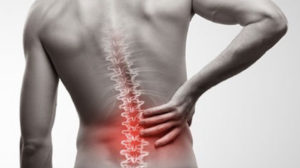
CORE Physical Therapy In Omaha Explains…
By Dr. Mark Rathjen PT DPT CSCS
CORE Physical Therapy Co-owner
17660 Wright St. 9/10
Omaha NE
402-933-4027
Conclusion:
“There is low quality evidence that Pilates, stabilisation/motor control, resistance training and aerobic exercise training are the most effective treatments, pending outcome of interest, for adults with NSCLBP. Exercise training may also be more effective than therapist hands-on treatment. Heterogeneity among studies and the fact that there are few studies with low risk of bias are both limitations.”
What does this mean?
There are many ways to improve back pain ranging from exercise based and hands on manual treatment Programs. The best combination has many different implications per patient and per their respective sport or activity of return. The best combination for any one patient is unique to that person, and that plan is developed by our treating doctors. There is no ONE size fits all programs… All programs are unique and individualized.
How can CORE help me with back pain?
CORE has Specialized in the performance and rehab of athletes and their injures for more than a deceased. Combined, the owner have more than 30 years of experience in rehab, and 40 years in sports performance. They have the skills and knowledge to guide you to a tpainfree active lifestyle and sports, without restrictions. Our Goals is to make you better than before, and prevent any further issue buy using a whole body approach.
C.O.R.E. Physical Therapy and Sports Performance PC,
17660 Wright St, Suites 9/10
Omaha, NE 68130
402-930-4027
CORE Physical Therapy is a small family owned business.
CORE Physical Therapy has no investors.
CORE Physical therapy runs completely independent.
CORE Physical Therapy competes against huge companies and Hospitals.
CORE Physical Therapy has won Best of Omaha, 2016, 2017, 2018, 2019, 2020, 2021.
CORE Physical Therapy has to be better than its competition to compete.
CORE Physical Therapy is different, Come see the CORE difference.
At CORE Physical Therapy in Omaha, We specialize in the treatment of athletes. We have worked with athletes for a combined 30 years. CORE was established in 2015 by Dr. Mark and Dr. Claire Rathjen is family owned and operated.
Proud winners of the Omaha Choice awards for 2016, 2017, 2018, 2019, 2020,2021
Expertise award winners 2018, 2019, 2020, 2021
Faces of Omaha Winners 2018, 2019, 2020, 2021
We are proud to serve the greater Omaha metro area; Gretna, Elkhorn, Papillion, Bellevue.
For More information, Please feel free to contact us http://coreomaha.com/contact/
Please feel free to follow us at https://www.facebook.com/COREomaha/
To get started http://coreomaha.com/getting-started/
For more Blog information http://coreomaha.com/blog/
Youtube Account linked below.
https://www.youtube.com/channel/UCVg8OSN5h-i1n_ykw1Gvahg?view_as=subscriber
Which specific modes of exercise training are most effective for treating low back pain? Network meta-analysis
- PMID: 31666220
- PMCID: PMC7588406
- DOI: 10.1136/bjsports-2019-100886
Free PMC article
Expression of concern in
-
Br J Sports Med. 2020 Sep 3:bjsports-2019-100886eoc1. doi: 10.1136/bjsports-2019-100886eoc1. Online ahead of print.PMID: 32139370
Abstract
Objective: Examine the effectiveness of specific modes of exercise training in non-specific chronic low back pain (NSCLBP).
Design: Network meta-analysis (NMA).
Data sources: MEDLINE, CINAHL, SPORTDiscus, EMBASE, CENTRAL.
Eligibility criteria: Exercise training randomised controlled/clinical trials in adults with NSCLBP.
Results: Among 9543 records, 89 studies (patients=5578) were eligible for qualitative synthesis and 70 (pain), 63 (physical function), 16 (mental health) and 4 (trunk muscle strength) for NMA. The NMA consistency model revealed that the following exercise training modalities had the highest probability (surface under the cumulative ranking (SUCRA)) of being best when compared with true control: Pilates for pain (SUCRA=100%; pooled standardised mean difference (95% CI): -1.86 (-2.54 to -1.19)), resistance (SUCRA=80%; -1.14 (-1.71 to -0.56)) and stabilisation/motor control (SUCRA=80%; -1.13 (-1.53 to -0.74)) for physical function and resistance (SUCRA=80%; -1.26 (-2.10 to -0.41)) and aerobic (SUCRA=80%; -1.18 (-2.20 to -0.15)) for mental health. True control was most likely (SUCRA≤10%) to be the worst treatment for all outcomes, followed by therapist hands-off control for pain (SUCRA=10%; 0.09 (-0.71 to 0.89)) and physical function (SUCRA=20%; -0.31 (-0.94 to 0.32)) and therapist hands-on control for mental health (SUCRA=20%; -0.31 (-1.31 to 0.70)). Stretching and McKenzie exercise effect sizes did not differ to true control for pain or function (p>0.095; SUCRA<40%). NMA was not possible for trunk muscle endurance or analgesic medication. The quality of the synthesised evidence was low according to Grading of Recommendations Assessment, Development and Evaluation criteria.
Summary/conclusion: There is low quality evidence that Pilates, stabilisation/motor control, resistance training and aerobic exercise training are the most effective treatments, pending outcome of interest, for adults with NSCLBP. Exercise training may also be more effective than therapist hands-on treatment. Heterogeneity among studies and the fact that there are few studies with low risk of bias are both limitations.
Keywords: analgesics; behavioural symptoms; catastrophization; physical activity; physical therapy modalities; rehabilitation; spine.
© Author(s) (or their employer(s)) 2020. Re-use permitted under CC BY-NC. No commercial re-use. See rights and permissions. Published by BMJ.
